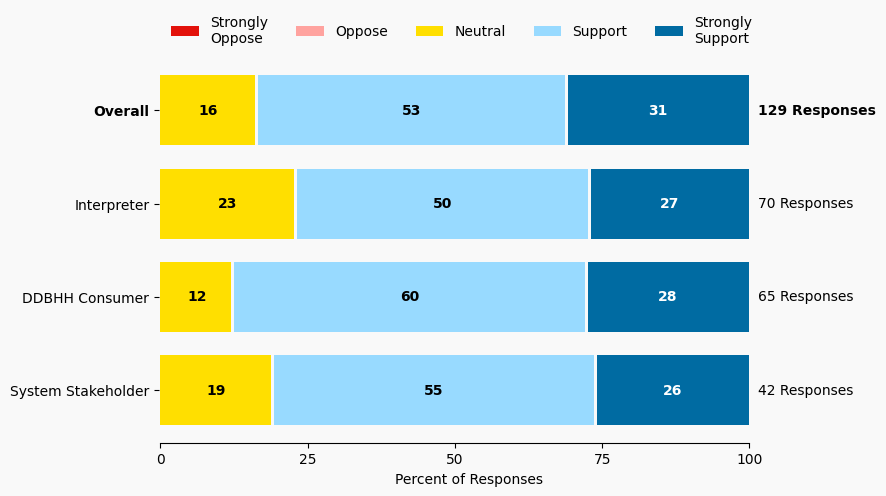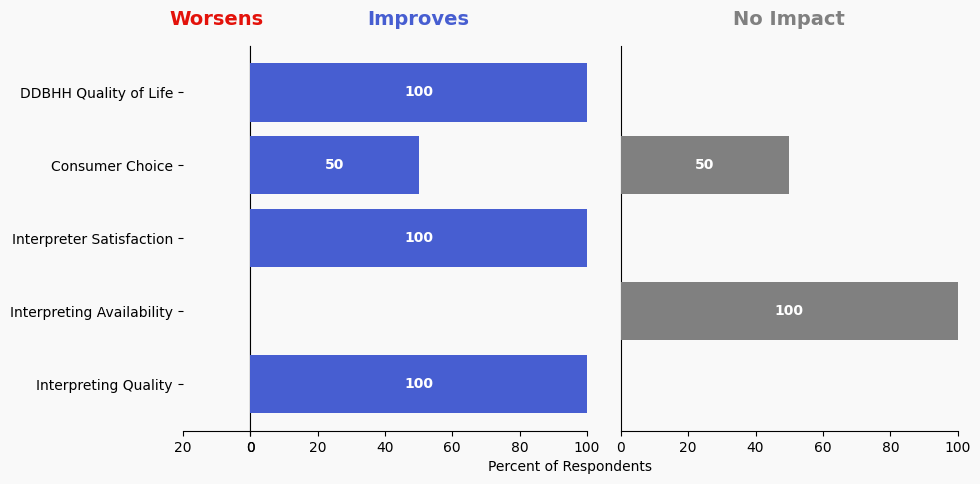38 Host Semi-Annual DDBHH & Interpreter Community Forums on Interpreting Topics
Issue: There are no current venues for developing shared understanding about interpreting issues amongst DDBHH community members and Deaf and hearing interpreters.
Proposed Solution: MRID and MADC (and other organizations as desired) partner to host dialogue among all impacted communities about interpreting related topics semi-annually. Organizations can poll members about topics to discuss. Small committee will organize the topics for discussion. Group sets ground rules for discussion together. Ongoing theme of “HOPE: visioning common goals for the long and short term in interpreters’ professional practice to best serve the DDBHH community.” Interpreter referral companies are also encouraged to participate and represent in the discussion. Identified topics could include: Minnesota Hospital Consortium, new interpreter supports, collaboration for advocacy, info and resource sharing fair, etc.
Expected outcome: From new to seasoned interpreters, all will have a chance to learn from DDBHH community members experiences and wishes relating to interpreting. DDBHH community members would better understand the interpreting process and what interpreters need to do quality work. Ultimate outcome would be some actionable items to improve the interpreting ecosystem for consumers.
Who is impacted: Consumers, interpreters
Timeline: 6 months

Summary of Support Image Description
The stacked bar charts show how respondents rated their level of support and the total number of responses. The percentage for the five support levels is shown from left to right: Strongly Oppose (Dark Red), Oppose (Light Red), Neutral (Yellow), Support (Light Blue), and Strongly Support (Dark Blue).
Respondents may identify with multiple subgroups. The overall level of support is:
Overall
Strongly Oppose: 0%
Oppose: 0%
Neutral: 16%
Support: 53%
Strongly Support: 31%
Click to see the detailed image description for each subgroup.
Interpreter
Strongly Oppose: 0%
Oppose: 0%
Neutral: 23%
Support: 50%
Strongly Support: 27%
DDBHH Consumer
Strongly Oppose: 0%
Oppose: 0%
Neutral: 12%
Support: 60%
Strongly Support: 28%
System Stakeholder
Strongly Oppose: 0%
Oppose: 0%
Neutral: 19%
Support: 55%
Strongly Support: 26%
Overview of Respondents Opting for In-Depth Solution Analysis
After indicating their support level, 1% of the 129 respondents opted in to further assess whether the solution would worsen or improve on five metrics. Of the opt-in reviewers (2 respondents), 100% supported the solution, 0% were neutral on the solution, and 0% opposed the solution.
The remaining 127 respondents did not opt in to further assess the solution. Of these people, 83% support the solution, 16% were neutral on the solution, and 0% opposed the solution.
Reviewer Evaluation of Solution Effectiveness

Solution Effectiveness Image Description
The stacked bar charts show how respondents assessed the effectiveness of this solution based on five metrics. For each metric, the percentage of respondents is shown from left to right: Worsens (Red), Improves (Blue), No Impact (Gray).
DDBHH Quality of Life
Makes It Worse 0%
Makes It Better 100%
No Impact 0%
Interpreter Satisfaction
Makes It Worse 0%
Makes It Better 100%
No Impact 0%
Consumer Choice
Makes It Worse 0%
Makes It Better 50%
No Impact 50%
Interpreting Availability
Makes It Worse 0%
Makes It Better 0%
No Impact 100%
Interpreting Quality
Makes It Worse 0%
Makes It Better 100%
No Impact 0%
Reviewer Feedback and Insights
Interpreter
Comments from Interpreters suggest that smaller, more intimate groups rather than large town-hall forums could better foster community building. One comment emphasize the importance of finding ways to share information and ensuring good facilitators to handle tough discussions.
Deaf, DeafBlind, Hard of Hearing
No comments were submitted.
System Stakeholder
No comments were submitted.
PREVIOUS SOLUTION
Issue: There are interpreting needs that are not currently covered by the ADA, such as for small businesses or community organizations for which paying for interpreters would be an undue hardship. Another applicable situation is when the deaf, deafblind and hard of hearing consumers themselves become the host, such as for a wedding or personal gathering.
NEXT SOLUTION
39 MRID Diversify Professional Social Events
Issue: Concerns have been raised about interpreters, particularly emerging interpreters, feeling a lack of connectedness to the interpreting community. Emerging interpreters do not have opportunities to develop relationships with interpreters at all stages in their career.network to support them, and are better prepared to work together in different settings.
Leave a Reply